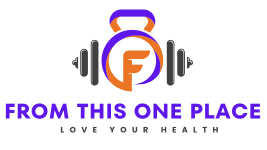Front squats and back squats are two popular exercises commonly performed in strength training routines. However, there is often a debate among fitness enthusiasts regarding which squat variation is safer for the body. In this article, we will provide a comprehensive analysis comparing the safety aspects of front squats and back squats, addressing concerns and misconceptions, and ultimately deciding whether one variation is indeed safer than the other. So, if you’ve ever wondered about the safety implications of these two exercises, read on to find out the answer once and for all!

The Difference Between Front Squats and Back Squats
Front squats and back squats are both popular exercises used in weightlifting and strength training. While they may seem similar at first glance, there are key differences in body positioning, distribution of weight, and muscle activation that set them apart.
Body Positioning
In front squats, the barbell is held in front of the body, resting on the front shoulders (anterior deltoids). The lifter’s hands grip the barbell, keeping the elbows high and the chest upright. This positioning requires a more upright torso throughout the movement.
On the other hand, back squats involve the barbell resting on the upper back (trapezius muscles) with an overhand grip. The lifter’s elbows are pointed down, allowing the bar to create a shelf on the upper back. This positioning allows for a slight forward lean of the torso during the squat.
Distribution of Weight
The distribution of weight differs in front squats and back squats. In front squats, the weight is positioned towards the front of the body due to the placement of the barbell. This places a greater load on the quadriceps and anterior leg muscles.
In back squats, the weight is centered on the lifter’s back, creating a more balanced distribution. This allows for greater activation of the glutes and hamstrings, as they assist in lifting the weight during the squat.
Muscle Activation
Front squats primarily target the quadriceps, with greater activation of the core muscles as they work to stabilize the torso throughout the movement. The glutes and hamstrings are also engaged to a lesser extent.
Back squats, on the other hand, provide greater activation of the glutes and hamstrings due to the posterior weight distribution. Additionally, the erector spinae muscles in the lower back are activated to maintain an upright torso.
Benefits of Front Squats
Improved Posture
One of the key benefits of front squats is the improved posture they promote. The upright torso position required in front squats helps to strengthen the muscles responsible for maintaining good posture. This can have a positive impact on overall posture, both during exercise and in everyday life.
Increased Quadriceps Activation
Front squats are particularly effective at targeting the quadriceps muscles. Due to the weight distribution and body positioning, the quadriceps are placed under increased tension throughout the movement. This can lead to greater gains in quadriceps strength and size.
Reduced Spinal Stress
Front squats place less stress on the spine compared to back squats. The weight being held in front of the body reduces the compressive forces on the spine, making it a safer option for individuals with back issues or injuries. It also minimizes the stress on the intervertebral discs, reducing the risk of disc herniation.https://www.youtube.com/embed/P8PiJluG7BQ
Benefits of Back Squats
Greater Glute and Hamstring Activation
While front squats primarily target the quadriceps, back squats are known for their ability to activate the glutes and hamstrings to a greater extent. The posterior weight distribution allows for greater hip extension during the squat, engaging these muscle groups more effectively.
Ability to Lift Heavier Weights
Back squats are generally associated with the ability to lift heavier weights compared to front squats. The balanced weight distribution and the involvement of the glutes and hamstrings provide a stronger base for lifting heavier loads. This makes back squats a preferred option for individuals looking to increase their overall strength.
Improved Core Strength
Back squats contribute to improved core strength and stability. The positioning of the barbell on the upper back requires the core muscles to engage in order to maintain an upright torso. This activation of the core muscles helps to strengthen the abdominals, obliques, and lower back muscles.
Potential Risks and Injuries
Overloading the Wrists and Elbows
Front squats can put strain on the wrists and elbows due to the grip required to hold the barbell. Individuals with limited wrist mobility or previous wrist injuries may find front squats uncomfortable or even painful. It’s important to gradually increase the weight and ensure proper wrist and elbow positioning to minimize the risk of injury.
Increased Pressure on the Shoulders
The bar placement in front squats places pressure on the shoulder joints, specifically the anterior deltoids. This can be challenging for individuals with shoulder mobility issues or shoulder injuries. Proper warm-up and mobility exercises are crucial to prepare the shoulders for the demands of front squats.
Risk of Forward Lean
Back squats have a natural tendency to allow a slight forward lean of the torso. While this can activate the glutes and hamstrings effectively, it can also put strain on the lower back. It’s important to maintain proper form and engage the core muscles to minimize the risk of excessive forward lean and subsequent lower back injuries.

Factors to Consider for Safety
Individual Fitness Level
Before incorporating front squats or back squats into a training routine, it is important to consider individual fitness levels. Beginners may benefit from starting with bodyweight squats or goblet squats before progressing to more advanced squat variations. This allows for proper form and muscle adaptation before adding external weights.
Proper Technique and Form
Regardless of whether you choose front squats or back squats, proper technique and form are crucial for safety and effectiveness. It is essential to learn the correct squatting mechanics, such as maintaining a neutral spine, tracking the knees in line with the toes, and avoiding excessive forward lean. Working with a qualified trainer or coach can help ensure that technique is correct, reducing the risk of injury.
Use of Equipment
Using the appropriate equipment for front squats and back squats can enhance safety and performance. For front squats, using an Olympic barbell with a front rack position can provide better stability and comfort. Back squats may require the use of a power rack or squat rack to safely load and unload heavy weights.
Personal Preference and Goals
Fitness Goals and Objectives
When deciding between front squats and back squats, personal fitness goals and objectives play a significant role. If the primary goal is to target the quadriceps and improve posture, front squats may be the preferred option. However, if the aim is to build overall lower body strength and lift heavier weights, back squats are often the exercise of choice.
Variety and Muscle Stimulation
Incorporating both front squats and back squats into a training program can provide greater variety and muscle stimulation. Alternating between the two exercises not only offers variation but also ensures balanced muscle development. This can help prevent muscle imbalances and enhance overall strength and performance.
Training Variety and Muscle Stimulation
Mixing Front and Back Squats
Incorporating both front squats and back squats into a training routine can be an effective way to target different muscle groups and promote overall strength and stability. By alternating between the two exercises, individuals can benefit from the unique advantages offered by each squat variation.
Alternating Squat Styles
Another approach is to alternate between front squats and back squats on different workout days. This allows for specific focus on different muscle groups during each session, while still providing variety and avoiding overuse injuries. However, it is important to ensure sufficient rest and recovery between squat sessions to prevent overtraining.
Expert Opinions and Research Studies
Studies on Muscle Activation
Several research studies have compared muscle activation between front squats and back squats. One study published in the Journal of Strength and Conditioning Research found that front squats resulted in significantly greater quadriceps activation compared to back squats. However, back squats showed greater activation of the glutes and hamstrings compared to front squats.
Injury Rates and Comparisons
Research into the injury rates and comparisons between front squats and back squats is limited. However, it is important to note that improper form and excessive loading can increase the risk of injury in both squat variations. It is essential to prioritize proper technique, gradually increase weight loads, and listen to the body’s signals to ensure safety during training.
Conclusion
In conclusion, the choice between front squats and back squats depends on individual preferences, goals, and considerations for safety. Front squats provide improved posture, increased quadriceps activation, and reduced spinal stress. Back squats offer greater glute and hamstring activation, the ability to lift heavier weights, and improved core strength.
Consider factors such as fitness level, proper technique, and equipment use to enhance safety and effectiveness. Incorporating both front squats and back squats, or alternating between them, can provide variety, stimulate different muscle groups, and promote overall strength and stability. Always prioritize proper form and gradually progress to maximize the benefits while minimizing the risks of injury.




